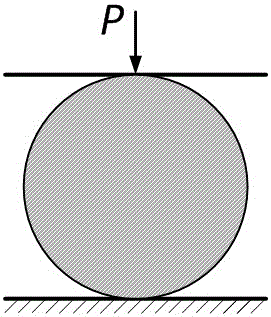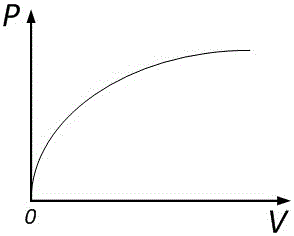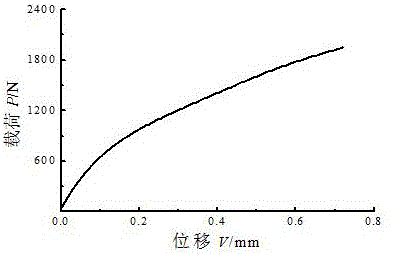Method for acquiring uniaxial stress-strain relation of materials by disc specimen compression
A strain relationship, bill of materials technology, applied in the direction of applying stable tension/pressure to test the strength of materials, can solve the problems of difficulty in testing, difficult to obtain mechanical properties of different regions, etc., to achieve easy popularization and application, concise formula, overcome the test Effect of sample size restriction
- Summary
- Abstract
- Description
- Claims
- Application Information
AI Technical Summary
Problems solved by technology
Method used
Image
Examples
Embodiment
[0031] In the technical scheme of the present invention, based on the equivalent energy theory derivation and a small amount of finite element simulation, a technical theoretical system for obtaining the uniaxial stress-strain relationship of the material by disk compression is proposed.
[0032] The compression test was carried out on the DP600 dual-phase steel nano-disc sample (radius 2.5mm and thickness 1mm) using MTS80925KN electro-hydraulic servo material testing machine, such as Figure 4 As shown, the test data is corrected to the zero point, the power law is used to fit the nonlinear section, and the exponents and coefficients obtained from the fitting are brought into equation (2) to solve the simultaneous equations to obtain the mechanical performance parameters σ of the material or component y With n, the constitutive relationship curve of the material can be obtained by putting into formula (3). That is, the comparison result of the uniaxial true stress-strain curve of...
PUM
 Login to View More
Login to View More Abstract
Description
Claims
Application Information
 Login to View More
Login to View More - R&D
- Intellectual Property
- Life Sciences
- Materials
- Tech Scout
- Unparalleled Data Quality
- Higher Quality Content
- 60% Fewer Hallucinations
Browse by: Latest US Patents, China's latest patents, Technical Efficacy Thesaurus, Application Domain, Technology Topic, Popular Technical Reports.
© 2025 PatSnap. All rights reserved.Legal|Privacy policy|Modern Slavery Act Transparency Statement|Sitemap|About US| Contact US: help@patsnap.com



